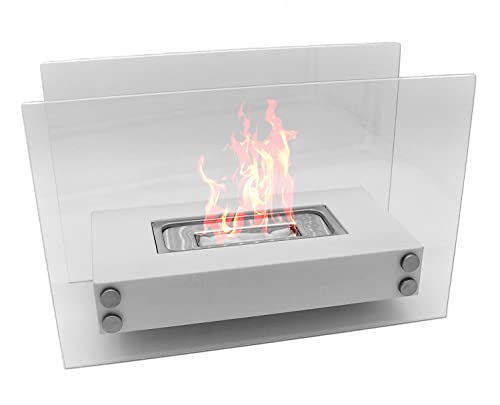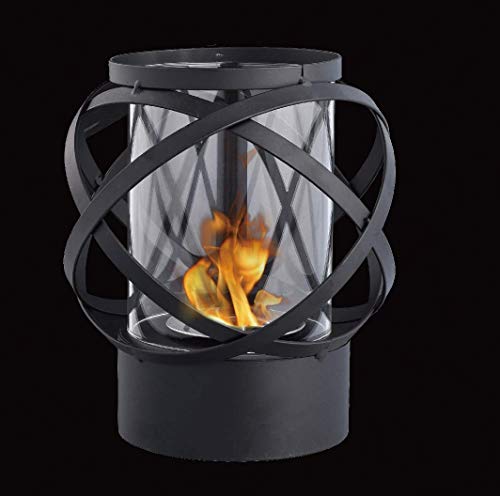The Most Common Bio Fire Debate Actually Isn't As Black And White As Y…
페이지 정보
작성자 … 작성일 24-09-22 11:02 조회 10 댓글 0본문
The BIOFIRE System and Your Immune System
The BIOFIRE System offers syndromic testing for infectious diseases, allowing healthcare providers to choose the appropriate test the first time. Patients benefit from faster diagnosis and more targeted treatment. Clinicians benefit from improved stewardship for antibiotics. Labs save money and increase efficiency.
The BioFire Pneumonia Plus Panel (PN panel) analyzes native sputum (including mini-BAL) and endotracheal lavage and bronchoalveolar Slurries (including mini BAL) for 33 clinically important pathogens and resistance genes to antimicrobials within one hour.
Respiratory
The burning of biomass (wood plants, agro-forestry and other organic material) creates gaseous pollutants and fine particles that adversely affect the respiratory system. Climate change may increase the negative impacts of forest fires on the health of humans.
In the United States, wildfire smoke has been associated with hospitalizations for respiratory illnesses, including asthma, COPD and lung cancer. This type of pollution can also increase the risk of cardiovascular disease and is a major cause of the burden of disease among the most vulnerable populations.
Wildfires have led to unhealthy levels of air pollution in several communities during the COVID-19 epidemic. However the public health response to this environmental issue has been sporadic and mostly focused on educating people regarding symptom management. This knowledge gap is alarming, due to the fact that smoking cigarettes and other causes of air pollution can lead to health problems.
Researchers are now looking at the best way to safeguard public's health during future incidents of this type. NIH is a research institution that studies this important public health issue through the BLUE CORAL and FIRE CORAL studies.
For the first time an prospective study will assess the long-term effects of exposure to smoke from wildfires and other sources. FIRE CORAL is seeking adult participants who are hospitalized for COVID-19's index episode who speak English or Spanish and are not pregnant. The protocol for Fire Coral includes a battery in-person assessments that objectively measure pulmonary function testing lung imaging and functional assessment.
The lungs are the most sensitive to the effects of smoke and other particles due to the fact that they can trigger or exacerbate chronic respiratory conditions, such as emphysema and COPD, and increase the risk of pneumonia. There are a variety of steps that can be taken to stop or lessen the negative health effects resulting from exposures to smoke, including abstaining from outdoor activities when it is possible and using the EPA's "N95" mask that is designed to catch fine particles.
Smoking cigarettes can cause irritation to the throat and eyes and cause an irritated nose. To reduce the symptoms the lungs need to be flushed by drinking plenty of water and taking medicines that decrease inflammation, like corticosteroids.
Bloodstream
Your bloodstream is at the forefront of fighting germs that invade your body. Dendritic cells, which are special cells, are like the fire department's call center; they take antigens (molecules that trigger an immune response) from invaders and then release proteins that trigger other white blood cells to come to fight them. The total number of white blood cells, differentials and band cells increased after firefighters' firefighting tasks, compared to levels after intense exercise without firefighting.
Skin
As the wildfires in California produced smoke and dust into the air during fall and winter dermatologists were concerned how that could affect the skin of people exposed to it. Maria Wei, a graduate student at University of California, Irvine, is studying how extreme pollution from wildfires affects the skin. Her research was published in Scientific Reports on April 22nd.
 Wei's research shows that the temperature of the skin changes based on how long the body is exposed to flames. It can take as long as two hours for a person's skin to reach its flash point--the point at which it burns and then turns ashy. It's crucial not to be near a campfire or fire and wear protective clothing when out during a hot or humid day.
Wei's research shows that the temperature of the skin changes based on how long the body is exposed to flames. It can take as long as two hours for a person's skin to reach its flash point--the point at which it burns and then turns ashy. It's crucial not to be near a campfire or fire and wear protective clothing when out during a hot or humid day.
While it's essential to take precautions against wildfire-related pollution, there's no way to stop forest bioethanol fires from happening. Wei predicts that the number of people suffering the effects of wildfires will grow as climate change causes more forests to be burned. This means that more people will need to wear caps and long sleeves as well as thick moisturizers.
Wildfire air pollution can also increase the severity of atopic skin dermatitis which causes itchy skin in a lot of people. She claims that the particles in smoke can block pores which can cause skin irritation.
Atopic dermatitis may make people more sensitive towards UV light. This is often exacerbated by smoke from wildfires. This can cause people to be more likely to visit tanning salons, and may cause them to tan with less protection than they ought to.

The BIOFIRE System offers syndromic testing for infectious diseases, allowing healthcare providers to choose the appropriate test the first time. Patients benefit from faster diagnosis and more targeted treatment. Clinicians benefit from improved stewardship for antibiotics. Labs save money and increase efficiency.
The BioFire Pneumonia Plus Panel (PN panel) analyzes native sputum (including mini-BAL) and endotracheal lavage and bronchoalveolar Slurries (including mini BAL) for 33 clinically important pathogens and resistance genes to antimicrobials within one hour.
Respiratory
The burning of biomass (wood plants, agro-forestry and other organic material) creates gaseous pollutants and fine particles that adversely affect the respiratory system. Climate change may increase the negative impacts of forest fires on the health of humans.
In the United States, wildfire smoke has been associated with hospitalizations for respiratory illnesses, including asthma, COPD and lung cancer. This type of pollution can also increase the risk of cardiovascular disease and is a major cause of the burden of disease among the most vulnerable populations.
Wildfires have led to unhealthy levels of air pollution in several communities during the COVID-19 epidemic. However the public health response to this environmental issue has been sporadic and mostly focused on educating people regarding symptom management. This knowledge gap is alarming, due to the fact that smoking cigarettes and other causes of air pollution can lead to health problems.
Researchers are now looking at the best way to safeguard public's health during future incidents of this type. NIH is a research institution that studies this important public health issue through the BLUE CORAL and FIRE CORAL studies.
For the first time an prospective study will assess the long-term effects of exposure to smoke from wildfires and other sources. FIRE CORAL is seeking adult participants who are hospitalized for COVID-19's index episode who speak English or Spanish and are not pregnant. The protocol for Fire Coral includes a battery in-person assessments that objectively measure pulmonary function testing lung imaging and functional assessment.
The lungs are the most sensitive to the effects of smoke and other particles due to the fact that they can trigger or exacerbate chronic respiratory conditions, such as emphysema and COPD, and increase the risk of pneumonia. There are a variety of steps that can be taken to stop or lessen the negative health effects resulting from exposures to smoke, including abstaining from outdoor activities when it is possible and using the EPA's "N95" mask that is designed to catch fine particles.
Smoking cigarettes can cause irritation to the throat and eyes and cause an irritated nose. To reduce the symptoms the lungs need to be flushed by drinking plenty of water and taking medicines that decrease inflammation, like corticosteroids.
Bloodstream
Your bloodstream is at the forefront of fighting germs that invade your body. Dendritic cells, which are special cells, are like the fire department's call center; they take antigens (molecules that trigger an immune response) from invaders and then release proteins that trigger other white blood cells to come to fight them. The total number of white blood cells, differentials and band cells increased after firefighters' firefighting tasks, compared to levels after intense exercise without firefighting.
Skin
As the wildfires in California produced smoke and dust into the air during fall and winter dermatologists were concerned how that could affect the skin of people exposed to it. Maria Wei, a graduate student at University of California, Irvine, is studying how extreme pollution from wildfires affects the skin. Her research was published in Scientific Reports on April 22nd.
 Wei's research shows that the temperature of the skin changes based on how long the body is exposed to flames. It can take as long as two hours for a person's skin to reach its flash point--the point at which it burns and then turns ashy. It's crucial not to be near a campfire or fire and wear protective clothing when out during a hot or humid day.
Wei's research shows that the temperature of the skin changes based on how long the body is exposed to flames. It can take as long as two hours for a person's skin to reach its flash point--the point at which it burns and then turns ashy. It's crucial not to be near a campfire or fire and wear protective clothing when out during a hot or humid day.While it's essential to take precautions against wildfire-related pollution, there's no way to stop forest bioethanol fires from happening. Wei predicts that the number of people suffering the effects of wildfires will grow as climate change causes more forests to be burned. This means that more people will need to wear caps and long sleeves as well as thick moisturizers.
Wildfire air pollution can also increase the severity of atopic skin dermatitis which causes itchy skin in a lot of people. She claims that the particles in smoke can block pores which can cause skin irritation.
Atopic dermatitis may make people more sensitive towards UV light. This is often exacerbated by smoke from wildfires. This can cause people to be more likely to visit tanning salons, and may cause them to tan with less protection than they ought to.

- 이전글 A The Complete Guide To Best Stroller All Terrain From Start To Finish
- 다음글 15 Things You've Never Known About Peugeot Key Replacement
댓글목록 0
등록된 댓글이 없습니다.